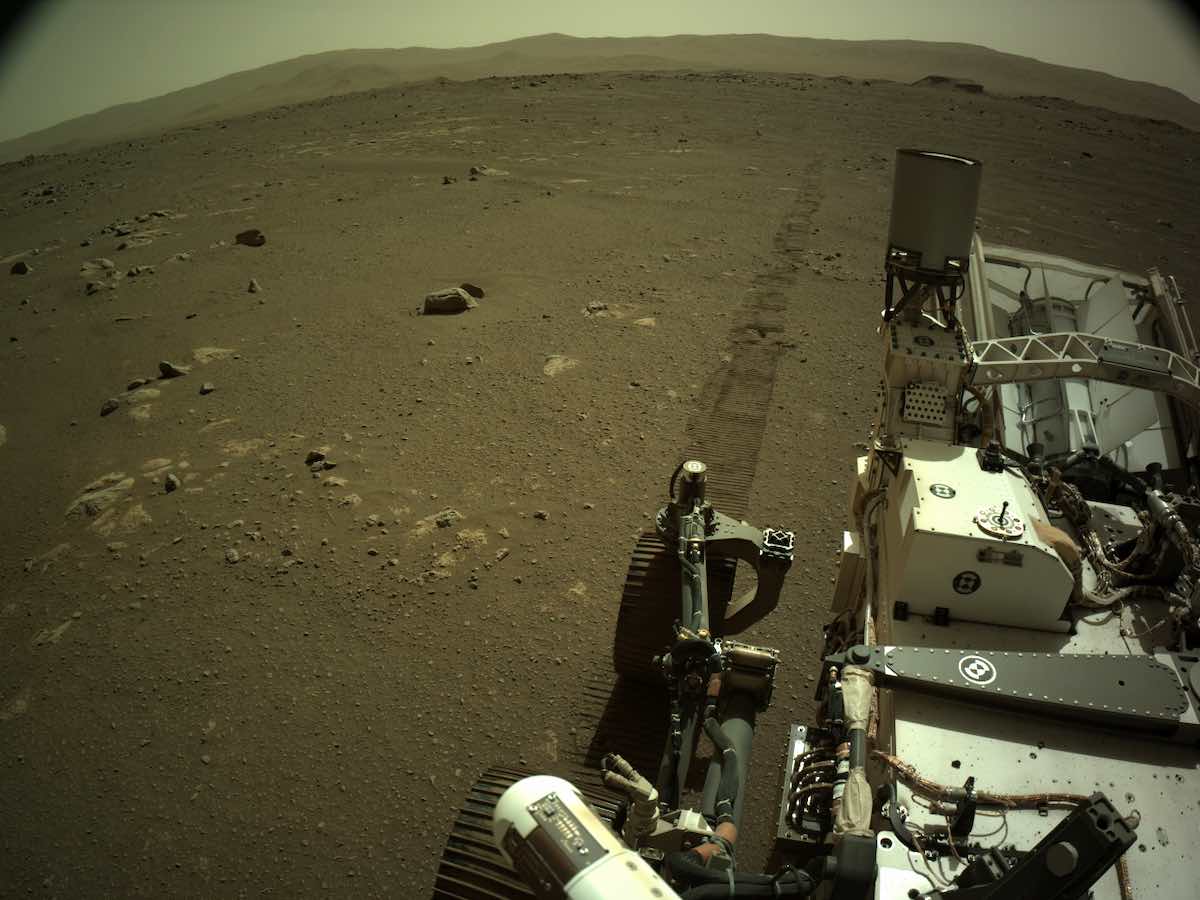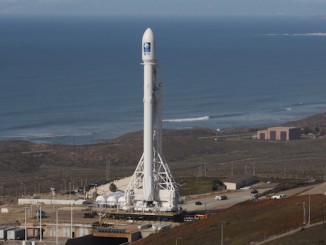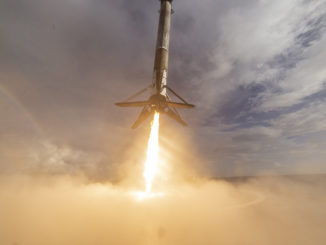
NASA’s Perseverance rover has recorded the crunching, rattling sound of its six metallic wheels rolling across Mars.
Perseverance carries the first microphones ever sent to Mars, and the mission already beamed back sounds of Martian winds and audio of one of the rover’s instruments firing a laser at a rock.
The microphone that recorded the sounds of driving was supposed to capture audio during Perseverance’s landing inside Mars’s Jezero Crater on Feb. 18. But the recording was lost due to malfunction in a system that was programmed to digitize the audio for storage on the rover’s computer.
Nevertheless, the microphone is still functional, and NASA released an audio clip a few days after landing of a wind gust on the surface of Mars. It was the first recording of natural sound from another planet.
Now NASA has released another audio recording captured as the rover drove across Martian soil.
The rover’s aluminum wheels are about 20.7 inches (52.5 centimeters) in diameter. The six wheels have cleats for traction and titanium spokes for “springy support,” NASA says.
“A lot of people, when they see the images, don’t appreciate that the wheels are metal,” said Vandi Verma, a senior engineer and rover driver at NASA’s Jet Propulsion Laboratory in Southern California. “When you’re driving with these wheels on rocks, it’s actually very noisy.”
NASA released two versions of the audio — one 90-second file edited and processed to filter out background noise, and another 16-minute clip with raw, unfiltered sound. The short and long versions are posted below.
Email the author.
“If I heard these sounds driving my car, I’d pull over and call for a tow,” said Dave Gruel, lead engineer for Mars 2020’s EDL Camera and Microphone subsystem. “But if you take a minute to consider what you’re hearing and where it was recorded, it makes perfect sense.”
Perseverance recorded the sounds during a 90-foot (27.3-meter) drive March 7, according to NASA. The rover’s top speed is a little less than 0.1 mph, or about 152 meters per hour.
The longer, raw audio clip includes a high-pitched scratching noise. The origin of the sound remains a mystery.
“Perseverance’s engineering team continues to evaluate the source of the scratching noise, which may either be electromagnetic interference from one of the rover’s electronics boxes or interactions between the mobility system and the Martian surface,” NASA said in a statement. “The EDL microphone was not intended for surface operations and had limited testing in this configuration before launch.”
Sounds travel much differently on Mars than on Earth. The Martian atmosphere is less than 1 percent the thickness of Earth’s atmosphere at sea level, and is primarily made up of carbon dioxide, not nitrogen and oxygen.
Last week, scientists working on the rover’s SuperCam instrument released an audio recording from a different microphone on the Perseverance rover.
The SuperCam instrument, developed in partnership between U.S. and French scientists, is designed to measure the composition of rocks using cameras, a laser, spectrometers, and a microphone.
The microphone on the SuperCam instrument is an aid for scientists to understand the physical properties of Martian rocks and soils.
“This is a very important technique in order to determine the hardness of samples,” said Naomi Murdoch, a SuperCam team member from the Institut Supérieur de l’ Aéronautique et de l’Espace in Toulouse, France.
One of the primary goals of the $2.7 billion Perseverance rover mission is to gather, seal, and cache samples on Mars for retrieval by a robotic return mission in the late 2020s. Data from SuperCam can help identify organic molecules — the building blocks of life — and help ground teams determine which rocks Perseverance should drill and sample for return to Earth.
Ground teams hope to use Perseverance’s microphones in the future to record the sound of the rover’s drill coring out the rock specimens.
Follow Stephen Clark on Twitter: @StephenClark1.



